When you think of Peru, those postcard images of Machu Picchu are probably what your mind conjures up. But with its soaring mountains, deep rainforest, and expanses of coastal desert, Peru has so much more to offer.
World-class hiking is one of those things! When I arrived in Cusco, the variety of trekking options blew me away. I’ve spent the last 11 years exploring the best Peru hikes and here are my top 21.
When to go
Most of these treks are in the Peruvian Andes, where there are two main seasons.
The chance of rain is lowest during the dry season (May to September), so it’s the most popular time to visit. However, temperatures drop below freezing overnight at higher altitudes.
This doesn’t mean hiking is out for the rest of the year. During the rainy season (October to April), rains generally come in short, sharp bursts. These are interspersed with dry periods and often intense sunshine.
January to March are usually the rainiest months, but electrical storms are most likely in November, December, and April. Fog can be a real issue in the rainy season as it’s easy to lose the trails and they may be very muddy.
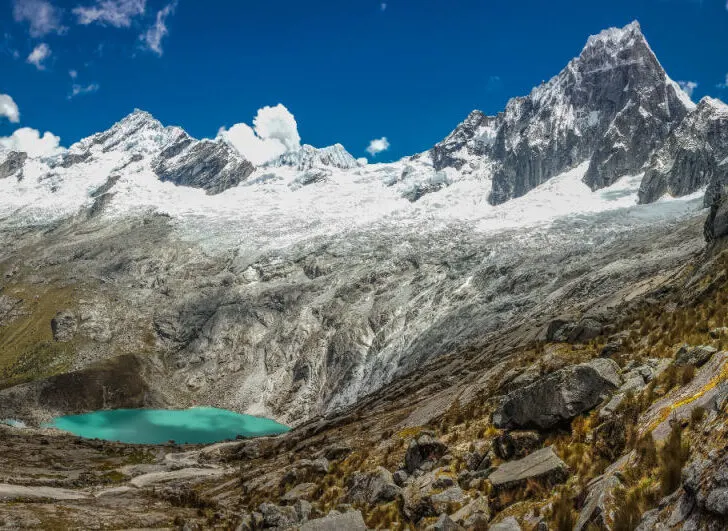
Things to consider before you hike
Maps
- Most of these treks are logged on Alltrails or Wikiloc. Remember that they don’t work without a data connection unless you have a subscription.
- Many of the trails are marked on Maps.me and maps on GPS devices. For Maps.me, you will need to download the area map while you have access to internet.
- The Instituto Geográfico Nacional (IGN) has paper maps (scale of 1:100,000) at their office in Surquillo, Lima. You can also download and print them. Some of the print shops near the university in Cusco sell them too.
Hiking Times
Hiking speed varies greatly from person to person. Very fit, well-acclimatized hikers will find the suggested timings exaggerated. Inexperienced hikers may find them overly optimistic.
Costs
- Tour prices vary greatly depending on region, trip, and type of service. The “from” prices are the cheapest group services I came across.
- The estimated costs of doing the treks independently include only transport from the nearest hub and entry/camping fees. Food, gear rental, pack animal, and additional travel are not considered.
1. The Ausangate Circuit
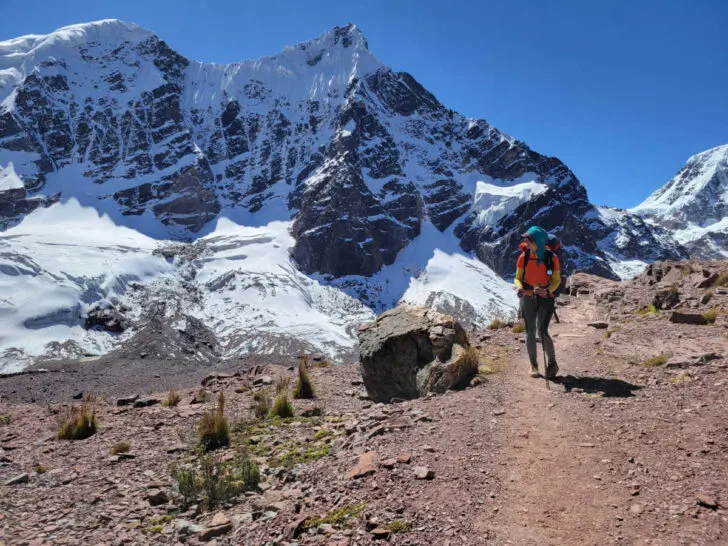
- Duration: Four to six days
- Distance: 31 miles (50 km); 50 miles (80 km) with Rainbow Mountain
- Rating: Moderate to Difficult
- Elevation: Between 15,090 feet (4,600 meters) and 16,730 feet (5,100 meters)
- Do I need a guide? No, if you have gear and experience of high-altitude backpacking. Don’t get distracted by the alpaca tracks!
- Cost: From around $50 USD without a guide. Tours cost from $500 USD.
The density of snow-capped peaks and the rainbow of colors woven through the landscape make this one of the best treks in Peru. It is accessible by public transport from Cusco (four hours), although it’s most efficient to get taxis to and from the trailheads.
The standard circuit takes most people four to five days. If you choose to add on Rainbow Mountain, budget one to two days more.
You will need to pay for most campsites. They are generally very basic, although some have structures to protect your tent from the wind. One campsite has toilets with real plumbing!
2. Tambomachay to Huchuy Qosqo
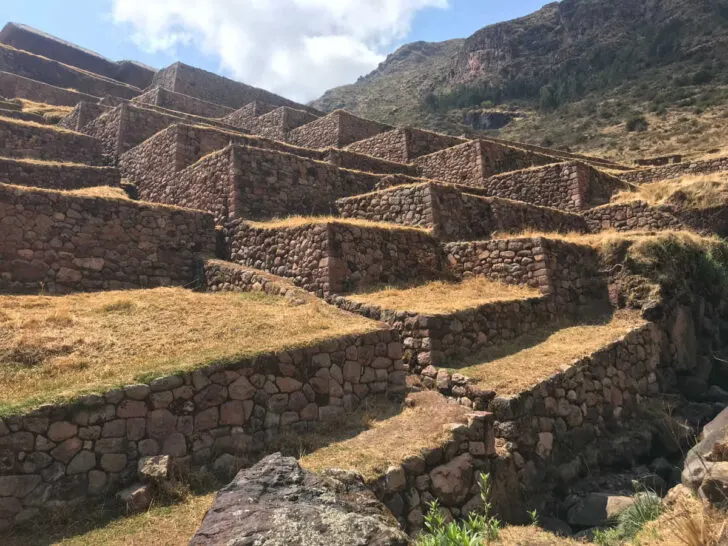
- Duration: Eight to ten hours or two days
- Distance: 14 miles (23 km)
- Rating: Moderate
- Elevation: Between 9,780 feet (2,980 meters) and 13,780 feet (4,200 meters)
- Do I need a guide? No, but GPS and a good map help, as it’s easy to get off track.
- Cost: Under $10 USD independently, from $400 USD with a guide (three days, including Machu Picchu)
With perfectly carved terracing, stone fountains, and beautifully restored adobe structures, Huchuy Qosqo is an archaeology buff’s paradise. But the panoramic views and section of well-preserved Inca trail mean that the hike doesn’t disappoint either!
This trail can be done as a long day hike or can be broken up with a night of camping. It ends in Lamay where you can enjoy a refreshing glass of frutillada or try spit-roasted guinea pig before heading back to Cusco.
3. Huanuco Pampa to Huarautambo
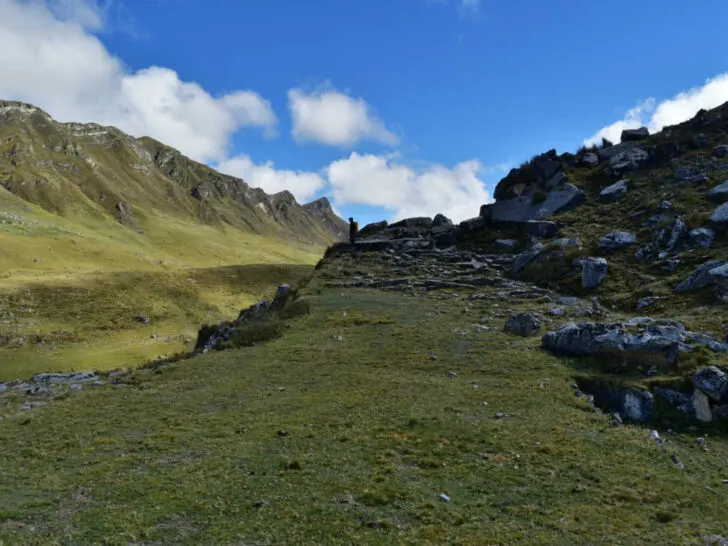
- Duration: Five days plus getting there and away
- Distance: 50 miles (80 km)
- Rating: Moderate to Difficult
- Elevation: Between 11,480 feet (3,500 meters) and 14700 feet (4,480 meters)
- Do I need a guide? No, but you need a very good sense of direction and to do a lot of prior research.
- Cost: Transport between Huaraz and the trailheads costs around $200 USD. Only private tours are available, from $2,500 USD.
Because of marketing, most people think that the Inca Trail to Machu Picchu is the only one. But it’s actually a tiny section of a much bigger road network: the Qhapac Ñan.
The trek between Huanuco Pampa and Huarautambo follows part of the main route that connected Cuenca, Ecuador, to Cusco, Peru. Although not restored like those in Cusco, the original Inca trail is clear and up to 40 feet (12 meters) wide in parts!
The trail snakes over high passes and across marshlands. At one point, the only way to cross a river is by oroya (metal basket pulled along a cable).
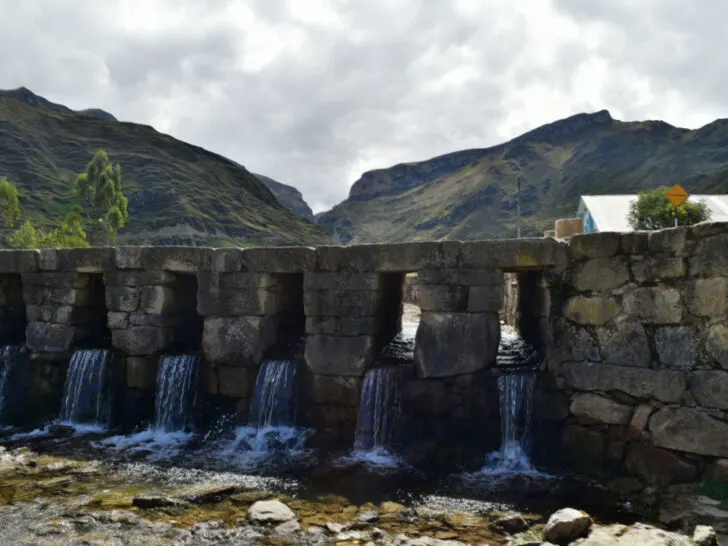
To top it off, the perfect trapezoidal doorways of Huanuco Pampa and the magnificent stone bridge in Huarautambo are clear demonstrations of the Inca’s engineering prowess.
4. Laguna Churup
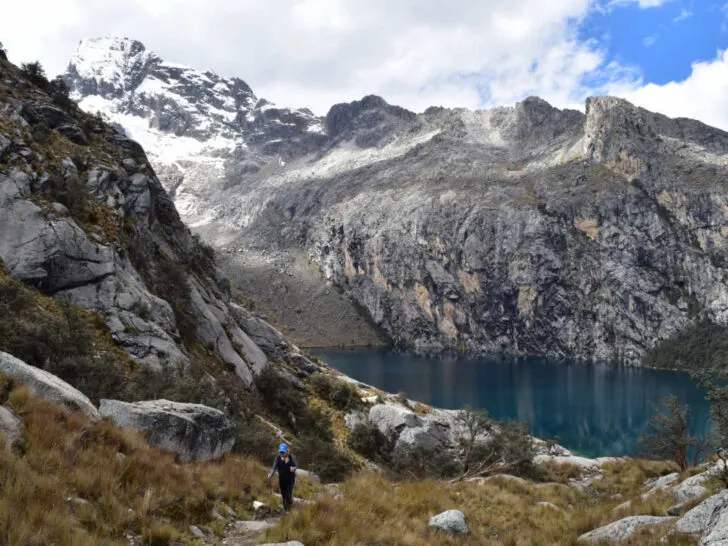
- Duration: Four to six hours
- Distance: 3.7 miles(6 km)
- Rating: Moderate
- Elevation: Between 12,600 feet (3,840 meters) and 14,600 feet (4,450 meters)
- Do I need a guide? No, but you will need to arrange a taxi to get to and from Pitec.
- Cost: Around $30 USD without a guide. Tours cost from $15 USD in group service, plus the national park fee.
Treks don’t have to be long and arduous to be incredible. Laguna Churup is a great example of this. With its deep blue waters nestled amongst polylepis trees at the foot of the glacier, this short hike transports you to an enchanted land.
The trail is steep, gaining 1,970 feet (600 meters) in 1.9 miles (3km). Near the top, you can choose to scramble up a rocky face or head up the gentler trail to the overlook.
Pitec, the starting point, is a 45-minute taxi ride from Huaraz. You need a permit to enter Huascaran National Park (s/30 for foreigners), which is available at the trailhead.
5. The Classic Inca Trail
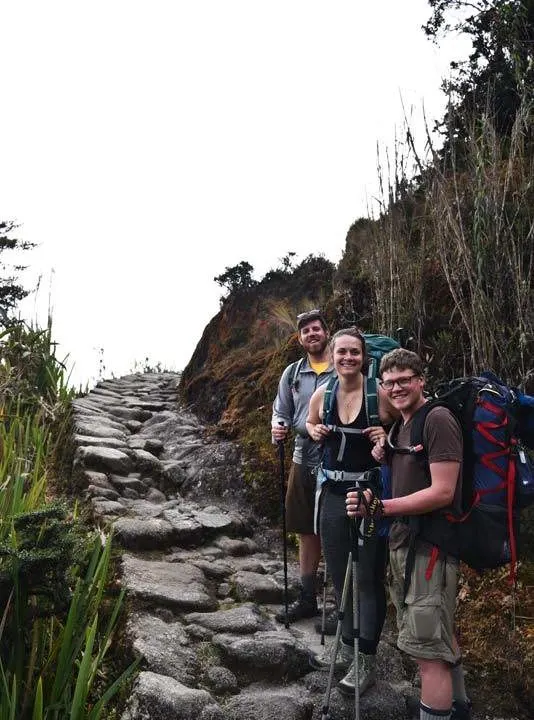
- Duration: Three and a half days
- Distance: 26 miles (42 km)
- Rating: Moderate
- Elevation: Between 7,970 feet (2,430 meters) and 13,780 feet (4,200 meters)
- Do I need a guide? Yes, only licensed agencies can obtain permits.
- Cost: From $780 USD. We recommend Alpaca Expeditions, who are both sustainable and provide jobs to local, indigenous families across the Cusco region. Use discount code WorldlyAdventurer for a 5% discount off your trek.
Once a backpacker’s dream, the Classic Inca Trail became so popular that a permit system was imposed in 2001, to protect it. These days, you can only hike the Inca Trail via organized tour.
But don’t let that put you off! The stone trail is beautifully restored with impressive staircases, hidden ruins, and spectacular scenery. To top it off, it’s now the only way (other than the one-day Inca Trail) to enter Machu Picchu via the Sun Gate.
Make sure you read our guide to the differences between the Inca Trail and the Salkantay trek (the two main trails to Machu Picchu) before you decide which to do!
Insider tip: If you have the budget, opt for a five-day Inca Trail tour (use the code WorldlyAdventurer for a 5% discount). The distance is the same, but you will camp at Phuyupatamarca on day three, with the most incredible views. You’ll also miss the crowds at the Sun Gate, and your Machu Picchu tour will be on day five.
Want a cheeky 5% discount on the Inca trail?
Alpaca Expeditions are not only one of the most sustainable companies offering Inca trail treks to Machu Picchu, but their guides, porters and chefs are the ultimate hosts.
They’re now offering Worldly Adventurer readers a 5% discount on all of their hikes – just mention Worldly Adventurer when you enquire!
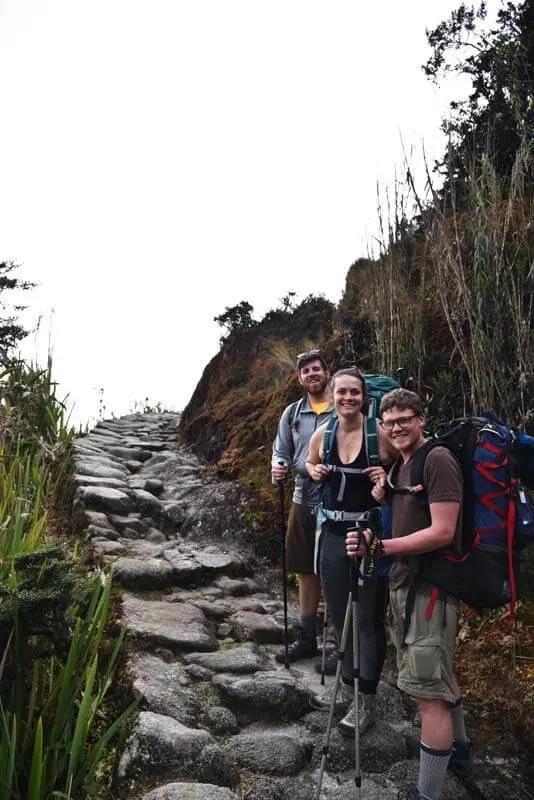
6. Inti Punku, Ollantaytambo
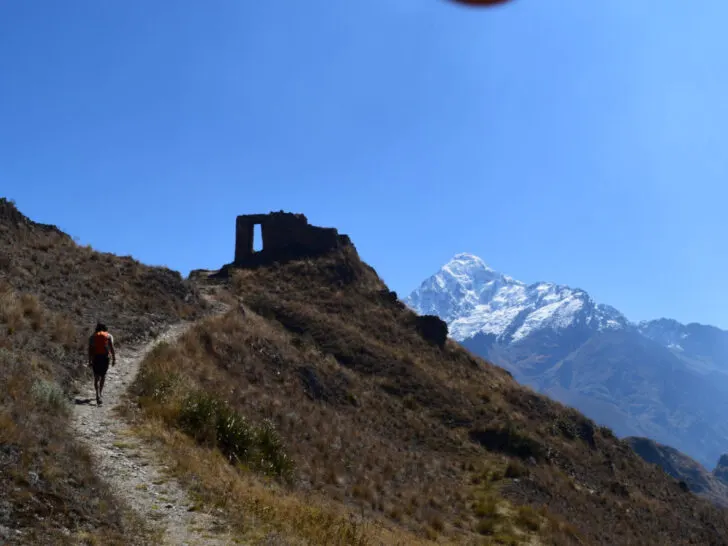
- Duration: Five to eight hours
- Distance: 11 miles (17.8 km)
- Rating: Moderate
- Elevation: Between 9,210 feet (2,810 meters) and 12,755 feet (3,890 meters)
- Do I need a guide? No.
- Cost: Public transport costs around $6 USD return from Cusco.
Not to be confused with Machu Picchu’s Inti Punku, this “sun gate” is perched high above Ollantaytambo.
The trail starts at the Inca Bridge and after a sustained climb, you’ll reach the Inca Quarry.
The construction at the top of the hill is what this hike is really about. The door perfectly frames the domed peak of Veronica, that towers over the valley.
Some people camp here to experience the stars and sunrise over the Sacred Valley. You can also turn this into a two-day hike, by starting in the village of Socma.
7. Huayhuash Circuit
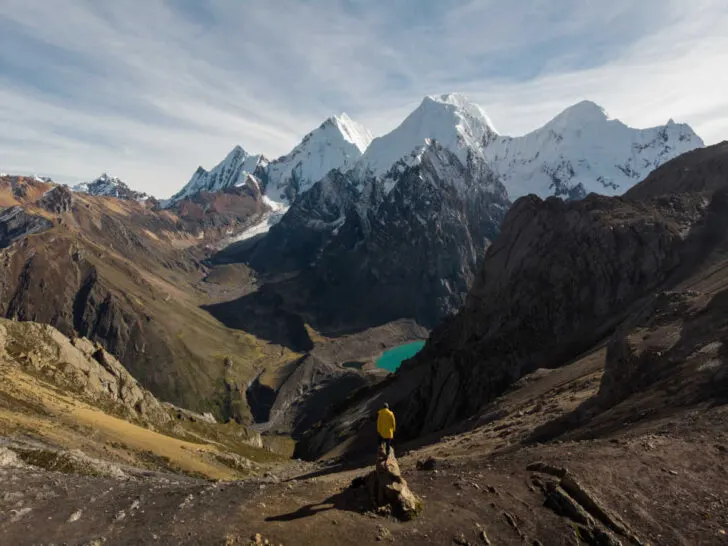
- Duration: 10 days, plus getting there and back
- Distance: 74.5 to 115.6 miles (120 to 186 km)
- Rating: Difficult
- Elevation: Between 10,830 feet (3,300 meters) and 16,400 feet (5,000 meters)
- Do I need a guide? No, if you have experience route finding and trekking at high altitude.
- Cost: Tours from $2,600 USD for two people. Doing it independently, transport, trekking permit, and camping cost around $180 USD.
For many, the Huayhuash Circuit is Peru’s best trek. The soaring, snow-covered peaks, glacial lakes, and even hot springs attract keen hikers from around the world.
Most people start and end in Llamac, a five-hour journey from Huaraz. Communities on the route charge camping/entrance fees and there is also a national park fee. You’ll need to bring all your food with you, although you may be able to get some basics in bigger communities.
The trek’s length, remoteness, and high altitude make it tough, so you’ll need to be acclimatized and in good physical condition. For a taste of the area’s natural beauty, you can do a five-day section.
8. Climbing Volcán Misti
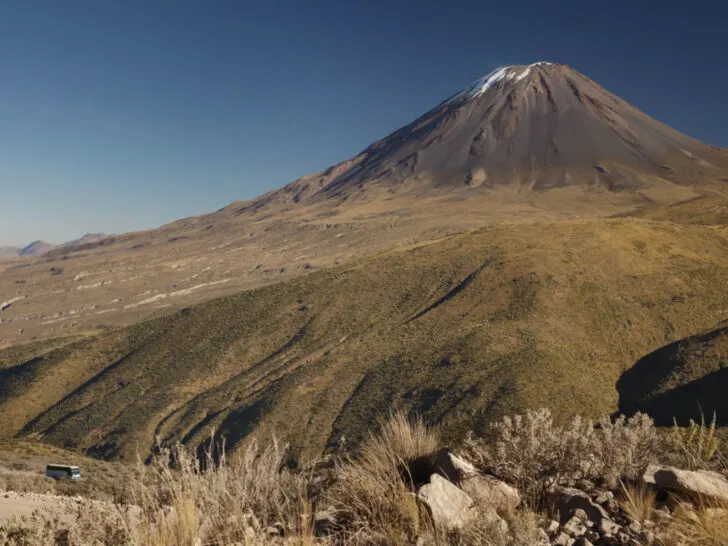
- Duration: Two days
- Distance: Eight miles (13 km)
- Rating: Difficult
- Elevation: Between 10,830 feet (3,300 meters) and 19,095 feet (5,820 meters)
- Do I need a guide? No, but going with a guide is strongly recommended, unless you have mountaineering experience.
- Cost: From $300 USD.
Whether you arrive to Arequipa by bus or plane, one of the first things you’ll notice is Misti. At 19,095 feet (5,820 meters), this perfect, conical volcano towers over the colonial city.
Such high mountains usually require technical skills and equipment, but the ascent of Misti is basically a hard hike.
Most people ascend the volcano alpine style in two days. You’ll hike to base camp on day one and day two will involve a very early start (between 1am and 3am), so you can summit and return to Arequipa. Because of the extreme altitude, acclimatization is key!
9. The Short Inca Trail
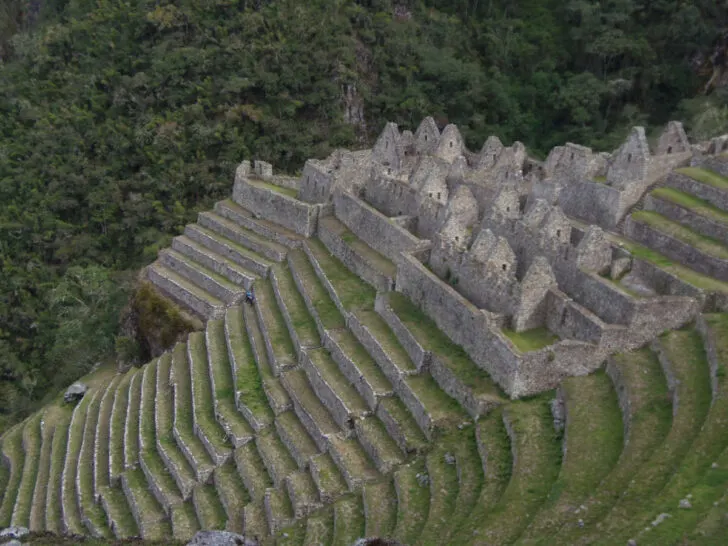
- Duration: Six to seven hours
- Distance: 5.6 miles (9 km)
- Rating: Moderate
- Elevation: Between 6,693 feet (2,040 meters) and 8,924 feet (2,720 meters)
- Do I need a guide? Yes, only licensed agencies can obtain permits.
- Cost: From $550 USD in group tour. We recommend Alpaca Expeditions, who are both sustainable and provide jobs to local, indigenous families across the Cusco region. Use discount code WorldlyAdventurer for a 5% discount off your trek.
If you don’t enjoy camping or can’t get a permit for the classic Inca Trail, you don’t have to miss out. Many consider the Short Inca Trail to be one of Peru’s best day hikes.
You get to the trailhead at km104 by train from Ollantaytambo. The trail is mostly uphill, but not too steep overall. The main highlight is climbing the terraces of Wiñay Wayna, built into the hillside.
This trail is the only other way to visit Machu Picchu’s Sun Gate, now closed to traffic from within the site.
Agencies often sell this trip as the “two-day” Inca Trail. However, it doesn’t involve camping and the second day is the Machu Picchu tour.
10. Seven Lakes, Ausangate
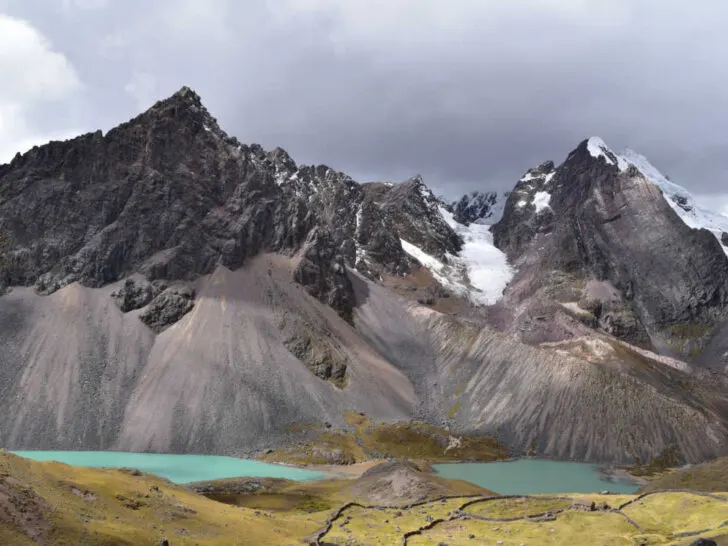
- Duration: Six to eight hours, overnight stay recommended
- Distance: 9.3 miles (15 km)
- Rating: Moderate
- Elevation: Between 14,107 feet (4,300 meters) and 15,912 feet (4,850 meters)
- Do I need a guide? No
- Cost: From $160 USD for a full-day group tour. From US$ 50 independently, including overnight stay and hot springs.
The Ausangate area is truly magnificent. Rugged, snow-covered peaks surround you, while the imposing Apu Ausangate takes center stage.
At the foot of all those mountains are seven beautiful lakes. Ranging from a murky turquoise to crystal-clear, sapphire blue, each one seems more beautiful than the next!
Agencies sell this trek as a day tour. But the eight-hour roundtrip drive and high altitude make this a long and taxing day.
I recommend spending the night in Pacchanta, soaking away any aches and pains in the hot springs. Accommodation and food are basic, but cheap, and you can take a leisurely trip back to Cusco the next day.
11. Urubamba to Lares via the Pumahuanca Valley
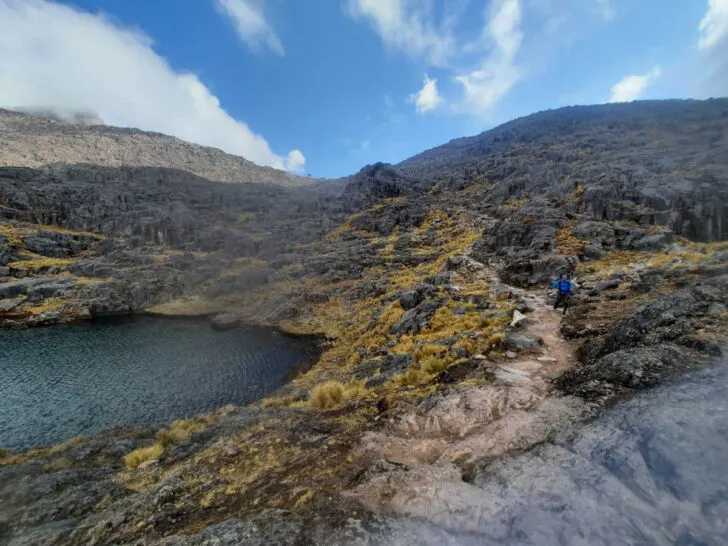
- Duration: Two to three days
- Distance: 17.4 miles (28 Km)
- Rating: Moderate
- Elevation: Between 10,335 feet (3,150 meters) and 15,750 feet (4,800 meters)
- Do I need a guide? No.
- Cost: Tours from $600 USD per person in group service, including Machu Picchu. From $25 USD independently.
Several different routes come with the title “The Lares Trek”. The Pumahuanca Valley is my favorite, because of the waterfalls, enchanted forests, and sparkling lakes.
The trailhead is a 30-minute taxi ride from the center of Urubamba. If you do it in two days, you’ll have to decide whether to camp before or after the pass. Once over, you may need to hike all the way to Cuncani (11 miles (18 km) from the start) to find a good campsite.
Some agencies offer these treks in the opposite direction, so adding Machu Picchu makes sense. But hiking from the Sacred Valley to Lares is slightly easier and you end up at the hot springs!
12. Kinsa Ccocha Circuit, Pisac
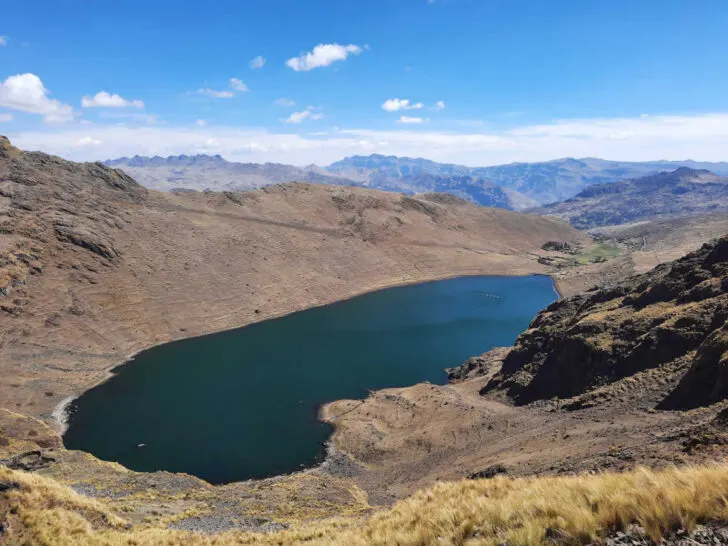
- Duration: Three to five hours
- Distance: 5.9 miles (9.5 km)
- Rating: Moderate
- Elevation: Between 13,120 feet (4,000 meters) and 14,110 feet (4,300 meters)
- Do I need a guide? No.
- Cost: $1 USD for entry to the community, transport from Cusco (public transport Cusco to Pisac, taxi from Pisac) from around $40 USD.
Only a 45-minute taxi ride from Pisac, the three lakes of Paru Paru are a natural treasure.
The biggest, Kinsa Ccocha (“three lakes” in Quechua), is nestled at 13,120 feet (4,000 meters) among rocky peaks. There is an easy trail around the lake (2.5 miles / 4 km), but extending the hike is recommended.
Finding the trail to the high pass is a little tricky, but it becomes clear eventually. At the highest lake, Puma Cocha, the silence and the light dancing across the water give it a magical feel.
13. Colca Canyon Trek
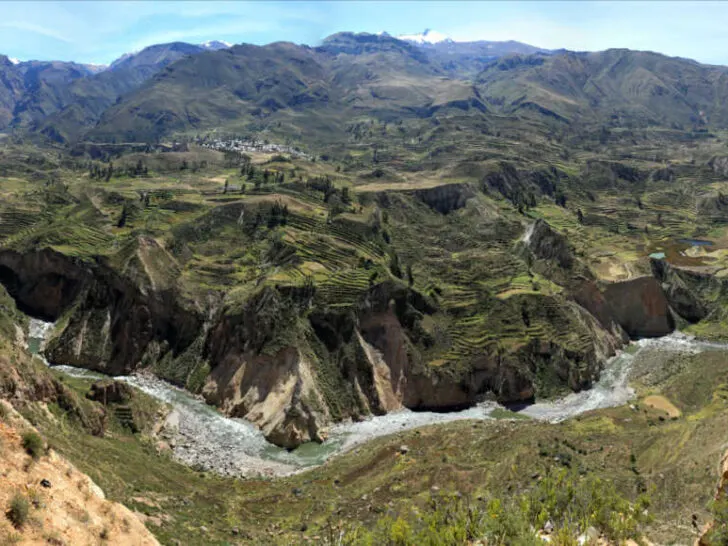
- Duration: Two to three days
- Distance: 10.6 miles to 18.4 miles (17 km to 30 km)
- Rating: Moderate to difficult
- Elevation: Between 6,890 feet (2,100 meters) and 10,830 feet (3,300 meters)
- Do I need a guide? No, but there have been several high-profile incidents of people getting lost, so take care not to go off trail.
- Cost: Tours from $60 USD per person in group service including park entry. From $150 USD independently.
Colca Canyon is famous for being twice as deep as the Grand Canyon, but that’s not all the area has to offer.
Huge volcanoes, some still active, tower above terraced farmlands. Unique handicrafts can be found in the local villages, and there is a density of Andean condors not seen elsewhere.
While there are hiking trails around the rim, most people choose to hike into the canyon. There are various options, but they all share the steep hike in and out.
The more common routes start and end in Cabanaconde. Sangalle, with its oasis-like feel, is the chosen spot to spend the night before the steep hike out. Get an early start to avoid the worst of the heat.
14. Choquequirao Trek
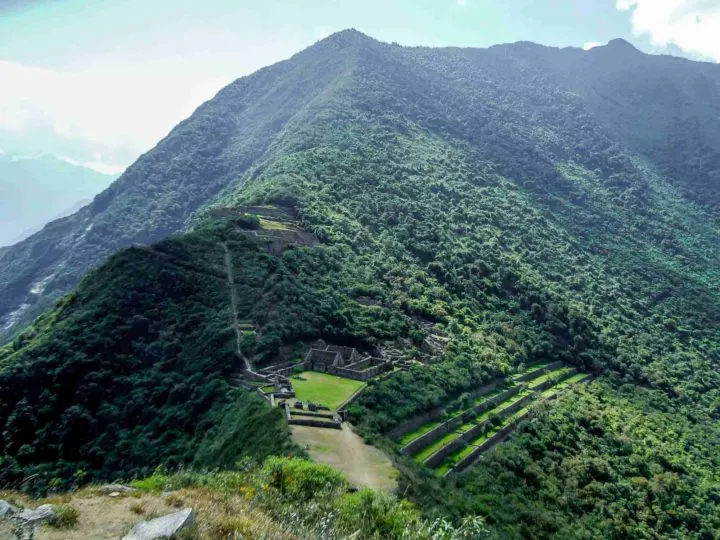
- Duration: Four to five days
- Distance: 32 to 40 miles (52 km to 64 km)
- Rating: Moderate to difficult
- Elevation: Between 4,760 feet (1,450 meters) and 10,010 feet (3,050 meters)
- Do I need a guide? No, the trail is obvious and there are even places to stay on the way.
- Cost: Tours from $500 USD per person in group service. The cost of trekking independently varies depending on if you camp or stay at homestays, how you get to the trailhead, and where you start.
Many people are disappointed with the crowds at Machu Picchu. As Choquequirao is only accessible on foot, it feels like the “lost city” you might imagine.
The heat and huge elevation changes (over 5,200 feet / 1,600 meters) make this trek tough. But the climb is well worth it for the site at the top!
The feature that makes Choquequirao stand out from other Inca ruins are the outlines of 24 llamas built into the steep terraces, in white stone.
Insider tip: The trail officially starts in Cachora, but taking a taxi to Capuliyoc, cuts out 13km of dirt road hiking. To be able to really explore the site, add an extra day to your itinerary.
15. Yanama to Vitcos
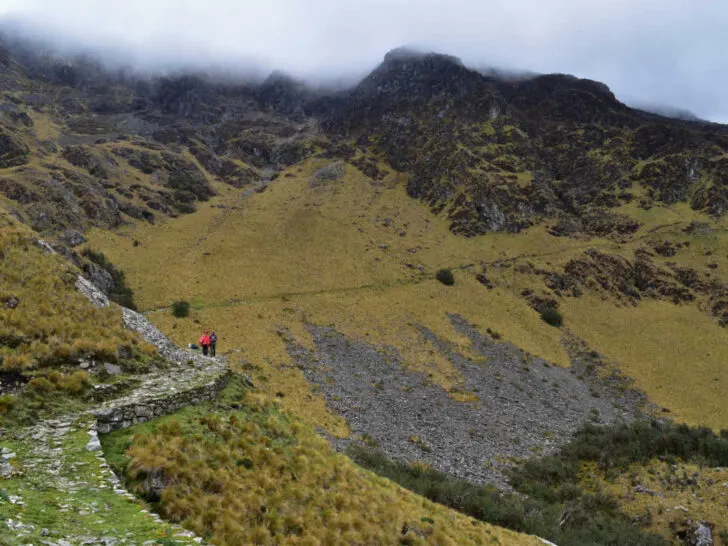
- Duration: Three days hiking, plus a day to get to Yanama
- Distance: 28.5miles (46 km)
- Rating: Moderate
- Elevation: Between 3,940 feet (1,200 meters) and 15,090 feet (4,500 meters)
- Do I need a guide? No, the trail is quite clear, although arranging transport is difficult.
- Cost: Most agencies offer this section as an extension of Choquequirao and in private service.
Wildly remote, with a stunning section of Inca Trail, this is a top hike in Cusco. Vitcos perches above the village of Huancancalle and was one of the last refuges of the Inca.
Leaving Yanama, the trail drops to cross a river, before climbing sharply again and entering a valley with massive rock walls towering above.
The Inca trail becomes clear at Quelcamachay, taking you over the pass and down into the valley on the other side. Before reaching Vitcos, you’ll come across a huge, carved rock called Ñustahispana, and a system of fountains.
Getting to Yanama isn’t easy. You might find a taxi in Santa Teresa that will take you, but it’s a long climb to a pass of 15,160 feet (4,620 meters). On foot, you can connect with the Choquequirao trek or the Salkantay trail at Collpapampa. Budget an extra two to three days for the connection.
16. Santa Cruz Trek

- Duration: Four days
- Distance: 34 miles (55 km)
- Rating: Moderate
- Elevation: Between 9,515 feet (2,900 meters) and 15,580 feet (4,750 meters)
- Do I need a guide? No
- Cost: Tours from $200, plus national park entrance fee ($40 USD). From $60 USD doing it independently by public transport.
The Santa Cruz Trek is the most popular multi-day trek in the Ancash region, as it is so accessible and heads deep into the Huascarán National Park.
Soaring snow-capped peaks – including Peru’s highest mountain, Huascarán – and crystalline glacier lakes await you! Vaquería and Cashapampa are the two trailheads. You can hike in either direction, but starting in Vaquería cuts down the overall elevation gain.
Some fitter hikers do this trek in only three days. If this works for you, it will save you some money, as the three-day national park permit is only $16 USD.
17. Salkantay Trek
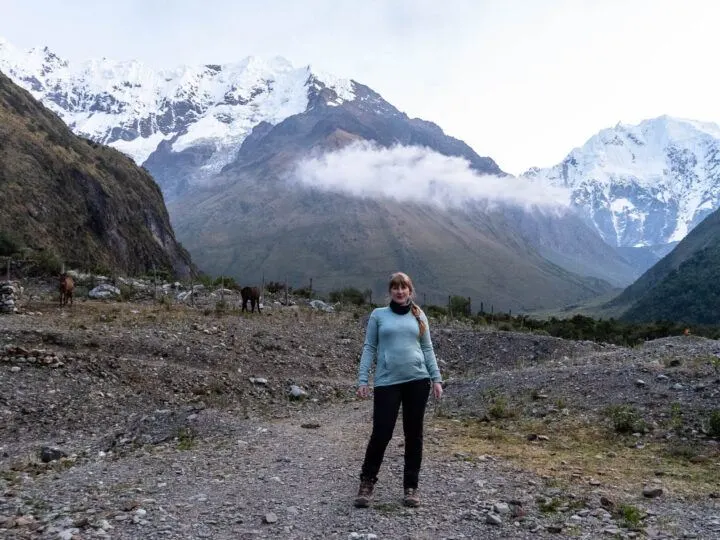
- Duration: Four to five days, including Machu Picchu
- Distance: 41 miles (66 km)
- Rating: Moderate
- Elevation: Between 5,970 feet (1,820 meters) and 15,160 feet (4,620 meters)
- Do I need a guide? No.
- Cost: Group tours from $550 USD plus tips (from $50 depending on group size). The cost of doing it independently varies greatly depending on whether you camp or stay at refuges, how you get to the trailhead, and if you add the day at Machu Picchu. We recommend Alpaca Expeditions, a locally and indigenous-operated tour company. Use the discount code WorldlyAdventurer for a 5% discount.
Unlike the Classic Inca Trail, the Salkantay Trek doesn’t require a permit, so it has become a very popular option.
This trek has some of the most varied scenery. Watched over by two snow-capped mountains, you hike over high puna and drop into the cloud forest. There’s an optional side trip to an emerald glacier lake and views of Machu Picchu from the ruins of Llactapata.
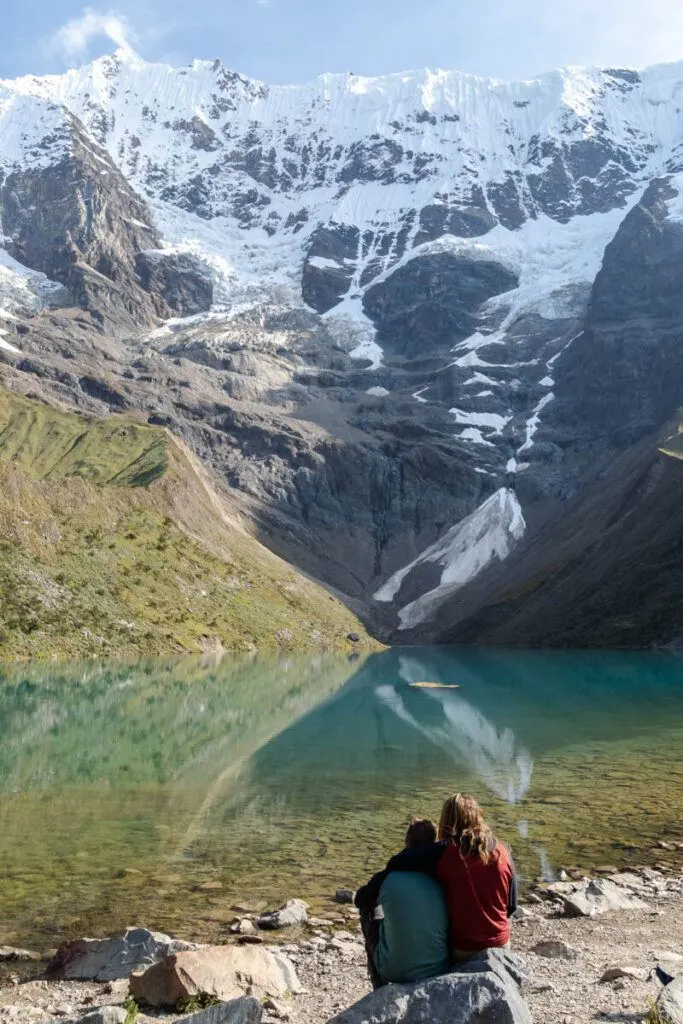
Want a cheeky 5% discount on the Inca trail or Salkantay trek?
Alpaca Expeditions are not only one of the most sustainable companies offering Salkantay and Inca trail treks to Machu Picchu, but their guides, porters and chefs are the ultimate hosts.
They’re now offering Worldly Adventurer readers a 5% discount on all of their hikes – just mention Worldly Adventurer when you enquire!
If you don’t want to camp, there are basic refuges along the way. There are also glamping and luxury lodge options, although these increase the cost significantly.
18. Huayna Picchu and Temple of the Moon
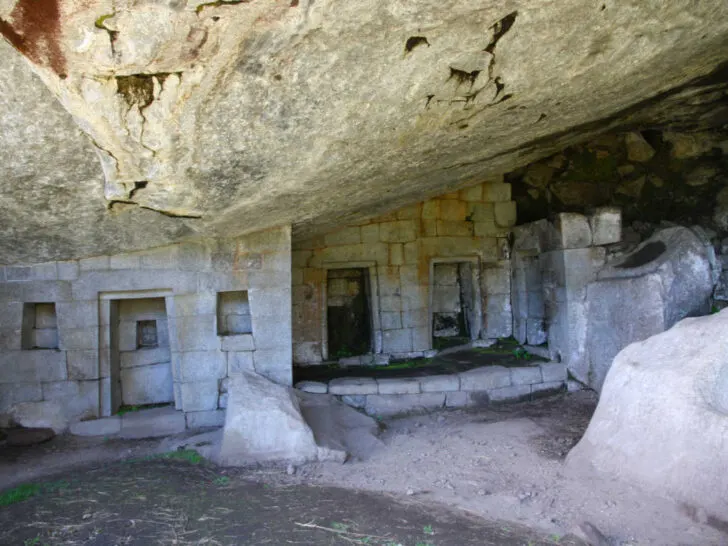
- Duration: One to three hours
- Distance: 1.9 miles (3 km)
- Rating: Moderate
- Elevation: Between 7,970 feet (2,430 meters) and 8,400 feet (2,560 meters)
- Do I need a guide? No.
- Cost: As an add-on to your Machu Picchu/Inca Trail tour, it usually costs $60 USD. Machu Picchu and Huayna Picchu Mountain ticket costs $40 USD.
In my opinion, the Huayna Picchu hike is overrated. Yes, the view from up there is great. But you have to pay extra and there’s always a scrum to be first through the gate.
So, why’s it on this list? Because of the Temple of the Moon.
Once at the top, drop down a series of ladders on the other side. The Temple of the Moon is carved and built into a natural cave. Besides the impressive stonework, this is the only place you can enjoy Machu Picchu without hundreds of other people.
Remember, you need a Huayna Picchu Mountain ticket to do this hike. At the time of writing, Temple of the Moon was closed for maintenance, so check before buying your ticket.
19. Laguna 69
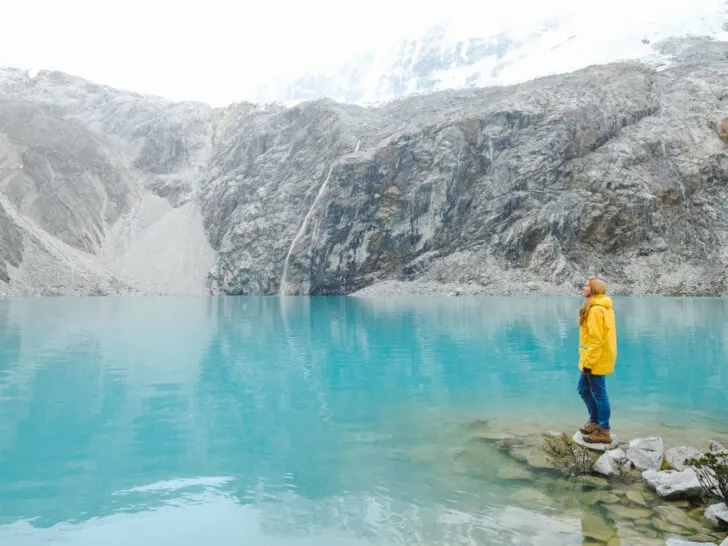
- Duration: Five to six hours
- Distance: 8 miles (13 km)
- Rating: Moderate
- Elevation: Between 12,795 feet (3,900 meters) and 15,090 feet (4,600 meters)
- Do I need a guide? No, but organized tours make for easier logistics.
- Cost: Tours from $20, plus national park entrance fee ($8 USD). Independently, from $15 USD in public transport, or $60 by private taxi.
When you think of a glacial lake the image in your mind is probably turquoise waters, surrounded by steep rocky shores, and a waterfall cascading from the white glacier above. You just imagined Laguna 69!
The trailhead is three hours from Huaraz, and traveling by public transport involves changing vehicles in Yungay. Otherwise, there are many daily tour options.
Laguna 69’s beauty means this hike gets busy in peak season. The only way to avoid the crowds is to hire a private taxi and leave Huaraz at 3/4am, so that you are hiking down when everyone else is about to start.
20. Gocta Falls
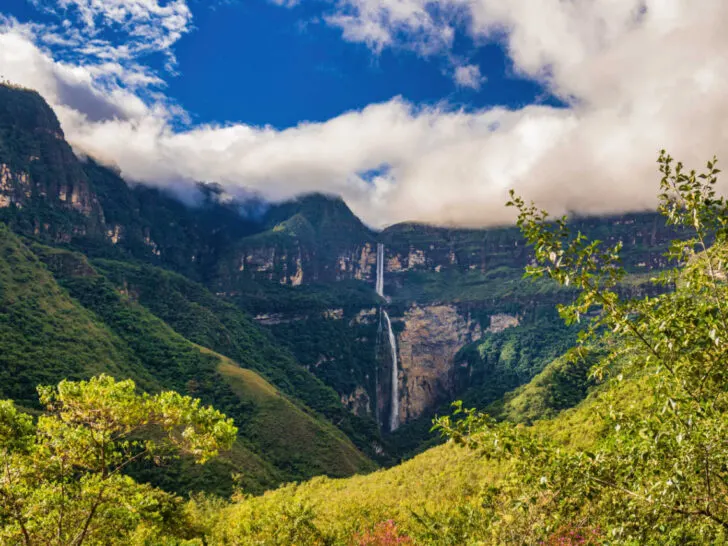
- Duration: Three to five hours
- Distance: 5.6 miles (9 km) starting in Cocachimba
- Rating: Moderate
- Elevation: Between 5,900 feet (1,800 meters) and 6,790 feet (2,070 meters)
- Do I need a guide? No
- Cost: $3 USD entrance fee, plus transport from Chachapoyas, $15 USD return. Group tours starting in Chachapoyas, from $25 USD
At over 2,530 feet (770 meters) high, Gocta waterfall is a very impressive sight.
Set in the cloud forest near Chachapoyas, this area is off the usual tourist trail. But it’s well worth a visit if you have lots of time in Peru or are heading to Kuelap.
The trail is clear, but getting to the trailhead is the hardest part if you aren’t staying in Chocacihmba. So, an organized tour will save the hassle.
It’s a hilly trail, but the low elevation means you shouldn’t have altitude-related issues. There are other impressive falls in the area too, that can be accessed by a 15-20 kilometer (9-12-mile) hiking circuit in one to two days.
21. Gran Vilaya Trek
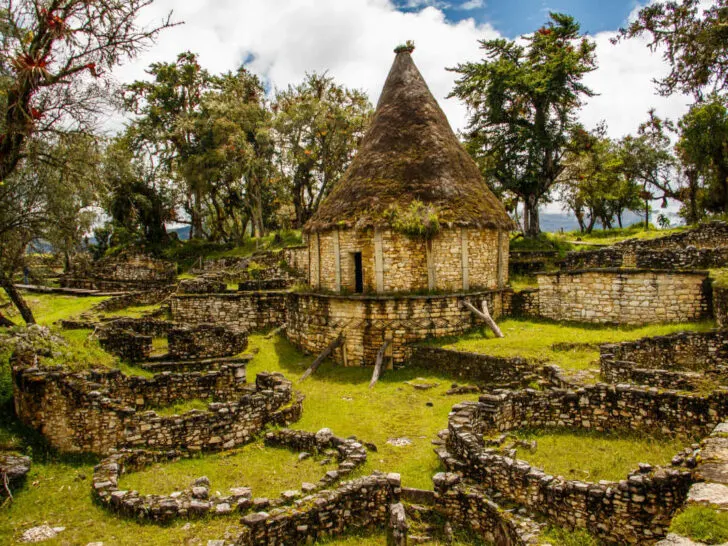
- Duration: Four days (organized tour)
- Distance: 23 miles (37 km) with transfers; 41.6 miles (67 km) for the whole thing.
- Rating: Moderate
- Elevation: Between 5,880 feet (1,790 meters) and 11,000 feet (3,450 meters)
- Do I need a guide? No, but contracting a guide is recommended.
- Cost: Tours cost from US$300, including overnight stays in basic accommodation.
The striking pre-Inca site of Kuelap has become very popular since the construction of a cable car in 2017.
Built by the Chachapoyas culture with less precision than Inca engineering, Kuelap’s location, circular buildings, and sheer size make it equally impressive.
There are other interesting archaeological sites in the area, and you can link them together with this hike. The Gran Vilaya trek takes you through the cloud forest, visiting several sets of ruins on the way.
An organized tour is recommended for this hike as otherwise, you end up walking a lot of roads.
And one I don’t recommend
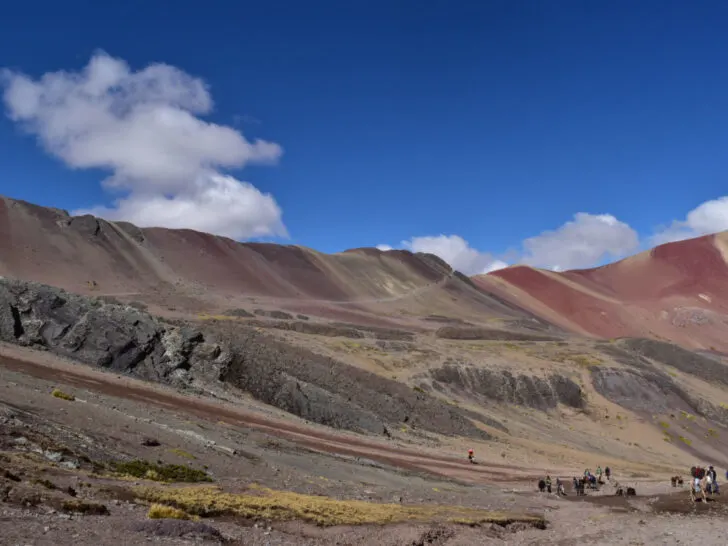
You may notice the conspicuous absence of one hike from the list: Rainbow Mountain.
Rainbow Mountain rocketed into the mainstream in 2015. Sure, it’s an impressive sight set in a stunning area. However the exponential increase in visitors due to day trips has caused social and ecological disaster.
New roads and car parks have encroached ever deeper into the wilderness. There are no trail or waste management plans. The communities on either side of the mountain have come to blows numerous times, resenting the other’s “success”.
The surrounding area is just as gorgeous. Mini rainbow mountains, deep red hillsides, massive, white glaciers, and blue lakes reflecting the surroundings. That said, if you want to see Rainbow Mountain itself, I suggest doing so as a side trip from the Ausangate Trek, or as a 12-mile (20 km) circuit on the Pitumarca side.
Ready for your trip to Peru? Plan your one-week to one-month itinerary with this guide, discover my top 30 hotels from across Peru here, and find out when the best time to visit Peru is here.

Dani
Monday 25th of March 2024
When you say you don't recommend Rainbow Mountain, do you mean the main one (Vinicunca) only? There are some alternative rainbow mountains that seem less crowded like Palccoyo - do you recommend those if one had time for a day trip? We'll be going to Peru in 2 weeks for our anniversary.
Steph Dyson
Tuesday 26th of March 2024
Hi Dani, yes Palccoyo is good, it's just the main Rainbow Mountain that is really unsustainable and not a good choice! Have a great anniversary trip! Steph